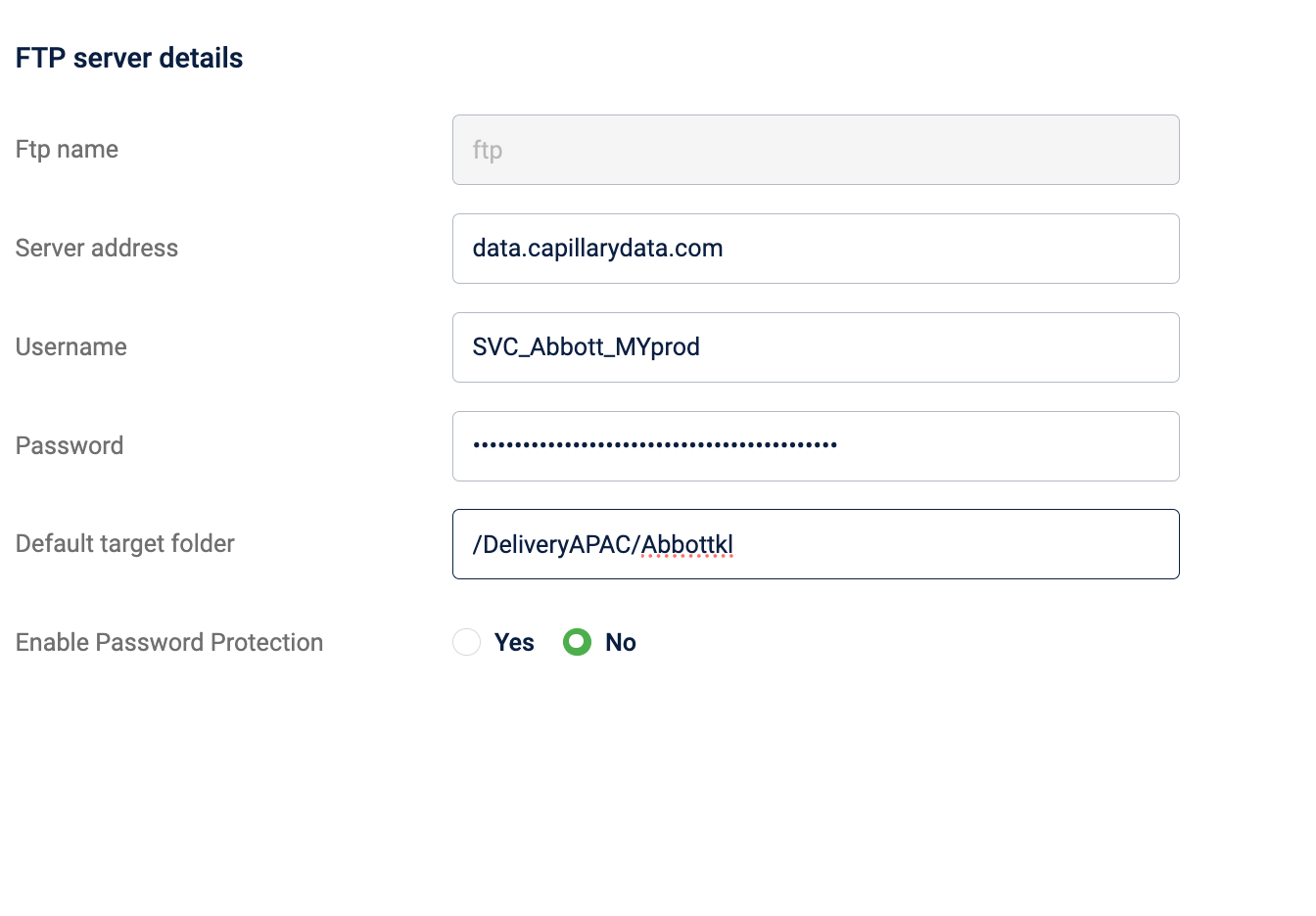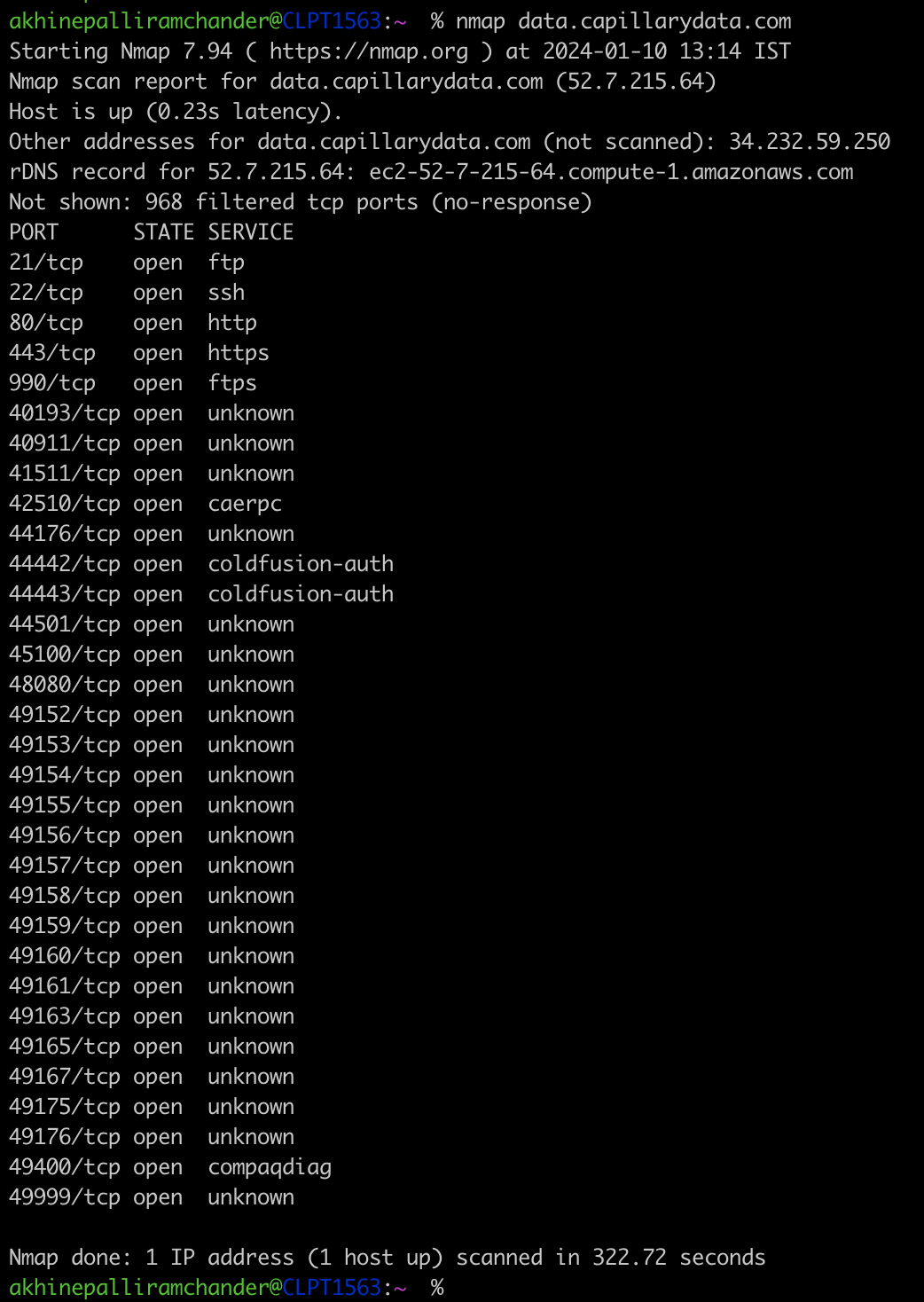Configure SFTP server for data export
Brands are required to have their own Secure FTP (SFTP) infrastructure for exporting data. Currently, Capillary supports data exports only via SFTP.
You can configure up to five SFTP servers. After the data is exported to the SFTP server, you can download it to your local machine.
NoteAn SFTP once added you cannot be deleted or renamed. However, you can change server details and the path within that SFTP.
Prerequisites
- Destination SFTP server for data storage
- Source Host server IP for data retrieval
- FTP Configuration Details:
- Hostname
- Port number
- Username and Password
- Path to the folder
Configuring SFTP
To configure the SFTP server, follow these steps.
-
Whitelist the below Capillary's IP addresses to allow connections to the brand's SFTP server.
Cluster
IPs
APAC1/INCRM (India)
54.235.251.85
3.227.110.70APAC2/AsiaCRM (Rest of Asia)
13.126.188.129
EUCRM
54.247.60.162
52.214.98.25USCRM
18.224.36.121
18.189.151.155 -
On Insights+ UI navigate to Settings > FTP and click Add FTP Server.

-
Enter the following details:

- Ftp name - Specify a name for the SFTP Server. The name will be displayed when configuring an export job (in Select FTP).
- Server Address - enter the URL of the SFTP. If the default port (22) is being used, then enter the URL of the client SFTP server. For example,
abc.def.com. If custom port 82 is used, then enter the URL with the port number of the client SFTP server. For example,abc.def.com:82 - Username - Enter the username of the SFTP server.
- Password - Enter the password of the SFTP server.
- Default Target Folder box - Specify the path in the SFTP server to which you want the data to be saved. For example, '/export'. If the path is not specified, data will be saved in the root directory of the SFTP server.
- Enable Password Protection - Select Yes to enable password protection for the files that will be exported to the current server.
-
Click Submit.
Note
- If the specified folder is not identified in the Target Path of the SFTP server, the configuration fails.
- The file name of an exported file will have the following naming convention.
- schedulenametemplateName_timestamp. For example, DailySlabChangeSlabChangeLog2019-10-29-12-30-021572356331802.
Testing SFTP configuration
You can either export a test file from Insights and test if the file is exported successfully or can also check the connection using Wetty.
To check the connection using Wetty,
- Run the command
nmap <hostname>to check the open port for a host.

- Run the command
telnet <hostname> <port>.

Updated about 5 hours ago
